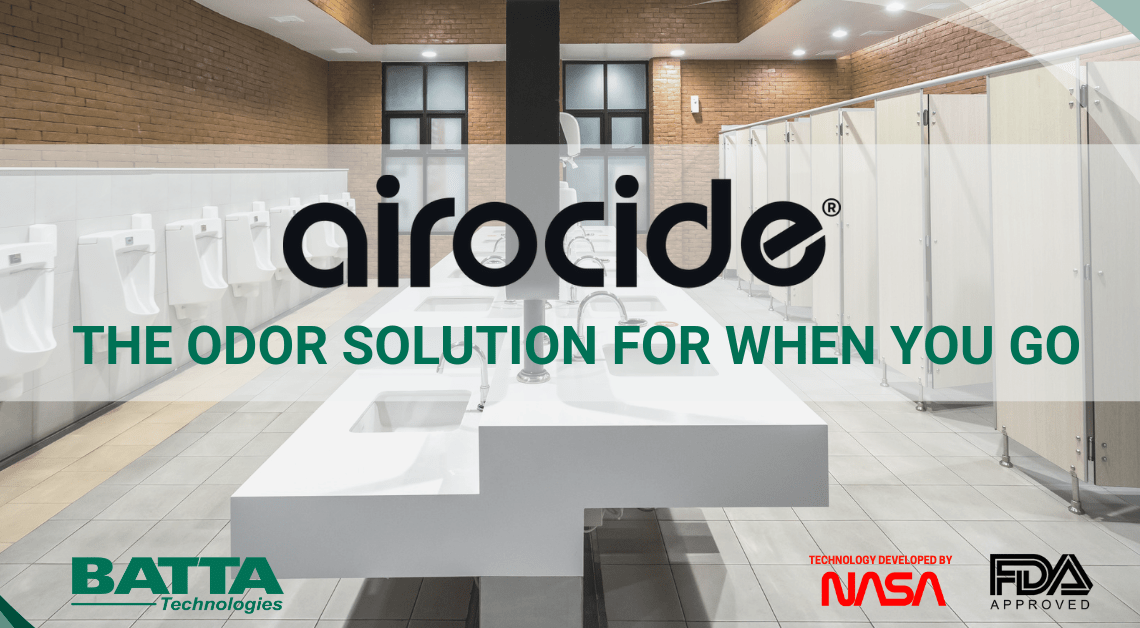
Commercial Restroom Odors and How to Successfully Kill Them
Did you ever enter a public or company bathroom and get a whiff of such a repulsive odor? Well actually many people daily stumble upon odorous facilities. The odor of a bad toilet probably means that you are standing in a room alongside millions of bacterial microbes. It is, after all, both embarrassing and offensive in a professional setting. Airocide has had great success in being a solution to this problem, and hopes to build on that.
Main Sources of Restroom Smell
Perhaps not the most appetizing subject for even a serious conversation, the main sources of restroom odors are: urine, solid waste excrement, floor drain dysfunction, floor grout, burst pipes and defective wax rings around toilets.
Some solutions for these odors require the services of plumbers, while others can be made to disappear with the help of Airocide an innovative filterless air purification systems.
1) Urine
The most common source of bathroom odor is urine. The primary component of Urine is a compound called Urea. If it isn’t properly removed; Urea will break down to Ammonia, which has a very pungent odor. Airocide is able to oxidize the Urea itself to Carbon Dioxide and Nitrogen Dioxide, and Ammonia to Nitrogen Dioxide. Thus, it eliminates the odor associated with Urine.
2) Solid Waste Excrement
Solid Waste excrement emits Methane, and acts as a growth medium for bacteria. These bacteria can subsequently release other Volatile Organic Compounds (VOCs). Airocide is perfect for removal of bacteria per the Texas A & M Study. It is also well established by published research that Photocatalytic Oxidation removes VOCs without forming harmful by-products.
3) Floor Grout
Bacteria, mold, mildew and other pollutants absorbed into the floor are the primary cause of grout odor. Due to the fact that grout is porous and difficult to clean, bacteria can easily thrive. Mopping can actually worsen the situation because the average mop cannot penetrate the grout’s rough and porous surface to remove impurities. Often, the grooves between the tile and grout can even draw contaminants out of the mop and transfer them into the grout’s pores.
Pollutants like mold, bacteria and mildew retained into the floor are the essential driver of grout smell. Because of the way that grout is permeable and hard to clean, bacteria can flourish. Cleaning can really intensify the circumstance on the grounds that the normal mop can’t penetrate the grout’s surface to eliminate the impurities.
Bathroom malodors frequently radiate from breaks in the floor tiles. The smell does not originate from the tiles themselves, rather from an accumulation of urine drops.
Conclusion
Regardless of whether a bathroom scent is specific or generalized, smell deodorizers will just cover the issue and what is truly required is a scent neutralizer/eliminator. This is particularly the situation with regards to urinal traps, which need completely cleaned by hand all the time.
The typical unit for this application would be our GCS-25. A small private school in California was spending over $3,000 on janitorial services for their bathroom alone. After the installation of the GCS-25; they were able to cease the janitorial services completely. Another client here in the United States, who maintains Commercial Properties, uses the GCS-25 in a women’s restroom used by 200 individuals each day. They have confided to me that have experienced a similar savings on Janitorial Services and odor control.

